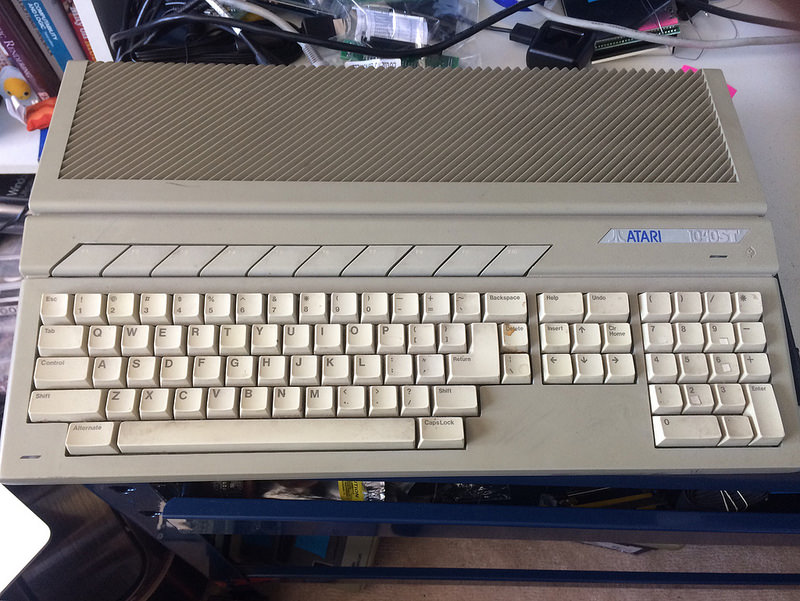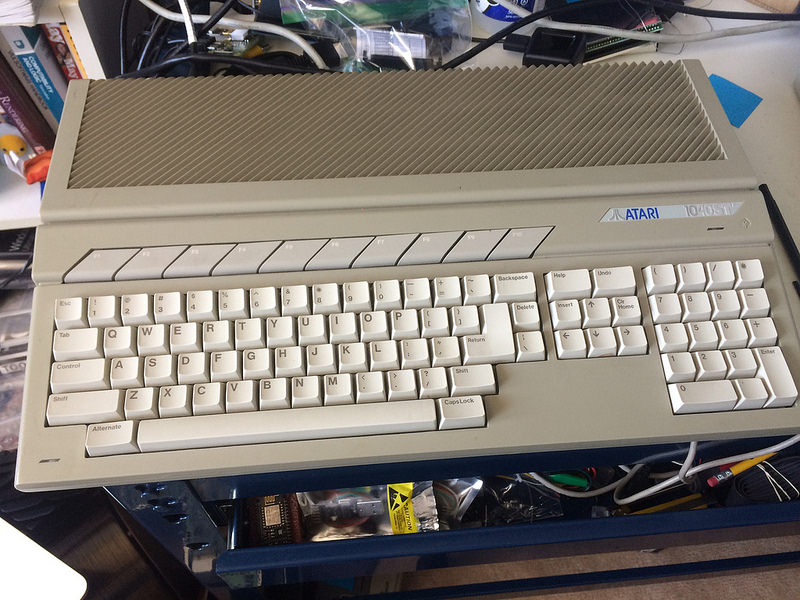Atari ST pickup
Tags: computer atarist atari keyboard mouse floppy pickups
Many years ago, I got ahold of an Atari 1040STF for really cheap. However, I didn’t have any monitor to use it with, so it has sat in storage for quite some time.
Last week, someone on my local classifieds was selling another 1040STF, with a working Atari 12” CRT monitor. I snapped it up, and went to work testing these computers out.
The Computers
Of the two STs, the one I originally obtained is in much worse shape. That’s probably why I got it for such a good deal so long ago.

Not only is it dirty, but it also has a fair few problems:
- A loud floppy drive that doesn’t seem to work: it randomly decides whether or not a floppy is write-protected, refuses to format, and makes an awful whirring sound the entire time. I’m used to bad floppy drives, having most recently cleaned and lubed the one in my Amiga 3000. From what I can tell, these machines generally use standard floppy drives, so I might just pull a known-good one off the shelf, or convert this machine to use a Gotek floppy emulator.
- The keyboard doesn’t work: I used the “Format” screen to test whether or not the keyboard worked. None of the keys appear to work, and the alt+arrow keys (for “Mouse Keys”) don’t make the mouse cursor move around or click, either.
The new 1040STF is in much nicer exterior condition, but also has problems keeping it from reaching its true potential.

This one is way cleaner, and generally more pleasant to be around. However, it has one glaring problem:
- Mouse movement doesn’t work. Left-click on the mouse works, but moving it around doesn’t work at all. I tried it with two mice (both an official Atari mouse and a previously-untested Golden Image Amiga/Atari mouse from my parts pile), and neither seems to move. From what I can tell, this is often caused by broken solder joints on the underside of the board, due to the strange way in which the ports are attached to the underside of the computer.
I’ll probably tackle this ST first, since it seems to be the easiest fix of the two. I might even try to make a shim or mount of some kind so there is less stress on the solder joint.
After that, I’ll have to find some software for this, and put it through its paces.
General impressions
It feels like a very low-rent version of an early Mac, though having colour is definitely a step ahead of what Apple was doing. There are borderline-infringing, cargo-cult copies of some Mac UI choices (e.g. the menu bar shows the name of the program being launched), and confusing omissions of others (e.g. no support for long filenames, no auto-detection/auto-eject of floppies, no overlapping windows) that were probably done to expedite development.
The parenthesis keys on the numpad are a weird thing that both the Amiga and Atari ST seem to have. Perhaps both teams just had a lot of engineers who liked Lisp.